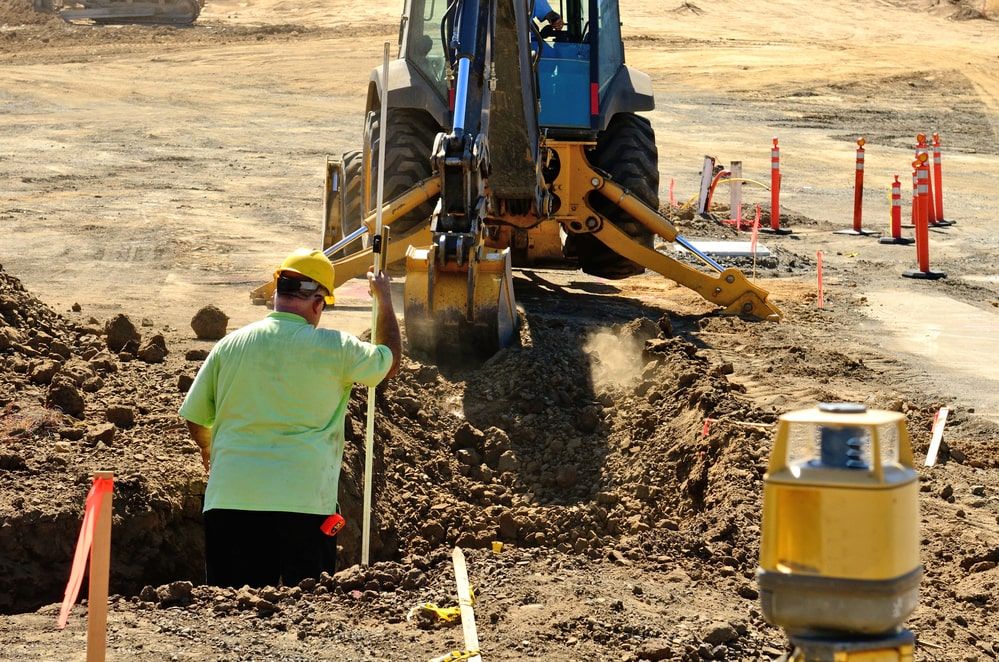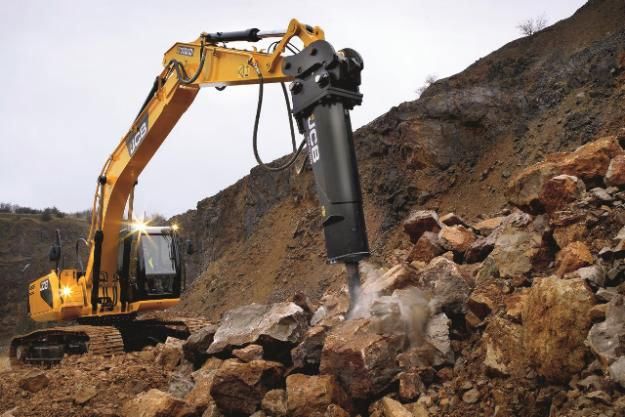Industrial Lancaster Trenching - Trenching Solutions for Services in Lancaster
Industrial Lancaster Trenching - Trenching Solutions for Services in Lancaster
Blog Article
Unveiling the Art of Excavation: Pro Tips for Safe and Efficient Excavating
In the realm of excavation, the proficiency of secure and productive excavating is an art kind that requires precision, knowledge, and adherence to recognized practices. As dirt is transformed and earth is moved, the ins and outs of excavation expose themselves, demanding an eager understanding of tools, dirt composition, safety methods, and environmental considerations. The expertise required to navigate these elements properly can imply the distinction in between a successful excavation task and a prospective catastrophe. By deciphering the layers of this detailed process, a globe of insights and methods awaits those looking for to raise their excavation abilities to brand-new elevations.
Significance of Correct Tools
To ensure the security and effectiveness of any excavation task, making use of the ideal equipment is critical. Excavation projects differ in scope and complexity, ranging from small domestic landscaping tasks to large-scale building endeavors.
Excavators are essential items of machinery in any type of digging operation. These versatile machines come in various dimensions to fit different job requirements. Mini excavators are optimal for smaller jobs, while bigger excavators take on extra considerable tasks effectively. Backhoes are one more important equipment kind, incorporating the features of a loader and an excavator in one device. They are beneficial for jobs needing convenience and maneuverability.
Bulldozers stand out in tasks that call for pressing huge quantities of soil or particles. By spending in the suitable tools, excavation projects can be completed securely, on time, and with accuracy.
Understanding Soil Make-up
A thorough understanding of soil structure is basic for executing excavation tasks with accuracy and security. Comprehending the different kinds of dirt is vital as it straight influences excavation techniques, equipment selection, and overall job performance.
Silt particles are smaller than sand yet bigger than clay, providing moderate drainage and cohesion. Organic issue, such as rotting plant product, impacts soil fertility and security.
Prior to commencing excavation, performing dirt examinations to identify its composition and characteristics is essential. This details assists in selecting the ideal devices, implementing safety and security procedures, and creating excavation approaches tailored to the details soil problems - lancaster excavation. By recognizing soil structure, excavation specialists can enhance project outcomes while making certain safety and adherence to finest practices
Precaution and Procedures
Understanding soil structure is the foundation upon which safety and security procedures and protocols for excavation tasks are built, ensuring the well-being of employees and the success of the undertaking. When it concerns safety and security throughout excavation, there are numerous essential actions that must be carried out to mitigate risks and stop crashes.
First and foremost, before any kind of excavating begins, an extensive examination of the website must be carried out to recognize any prospective dangers such as underground utilities, unsteady soil problems, or close-by frameworks that might posture a risk. It is essential to have a proficient person supervise the excavation process to guarantee that all security procedures are adhered to strictly.
Furthermore, all workers included in the excavation must be effectively educated in risk-free digging methods and the correct procedure of devices. By adhering to these safety steps and protocols, excavation tasks can be completed efficiently and without event.
Reliable Excavation Planning
When starting an excavation project, precise planning is necessary to ensure performance, safety and security, and successful end results. Efficient excavation planning includes a number of crucial steps that are crucial for the smooth implementation of the job. The very first step is to perform a thorough site evaluation to identify any potential hazards, such as below ground energies or unstable soil conditions. This details is essential for creating a comprehensive excavation strategy that includes safety and security actions and risk mitigation methods.
Once the site assessment is complete, the next step is to develop a clear timeline and timetable for the excavation activities. This consists of establishing the series of tasks, equipment needs, and manpower allocation. Appropriate scheduling assists prevent delays and makes sure that the project remains on track.

Moreover, communication among all staff member is extremely important during the preparation phase. Clear directives, normal updates, and reliable control are necessary for a successful excavation task. By investing time and initiative in meticulous preparation, excavation teams can significantly improve productivity, lessen risks, and accomplish successful end results.

Handling Environmental Considerations
With enhancing emphasis on environmental sustainability in construction techniques, managing environmental factors to consider has actually become an essential element of excavation jobs. Excavation activities have the potential to influence the surrounding atmosphere with dirt erosion, debris overflow, environment interruption, and contamination of water resources. To minimize these risks, it is important to apply best practices that prioritize environmental management.

Moreover, correct waste monitoring is crucial to avoid soil check and water contamination. Executing treatments for the disposal of harmful products, recycling of waste materials, and lessening making use of hazardous chemicals can considerably reduce the ecological influence of excavation jobs. By incorporating these methods right into excavation preparation and execution, construction business can ensure that their tasks are not only secure and effective however also ecologically responsible.
Final Thought
Finally, grasping the art of excavation calls for a complete understanding of appropriate devices, dirt structure, safety and security procedures, and reliable planning. By adhering to these guidelines and considering ecological factors, excavations can be carried out safely and successfully. It is essential to focus on safety and security and efficiency in every excavating job to ensure effective results.
As dirt is turned and planet is moved, the complexities of excavation disclose themselves, demanding an eager understanding of tools, dirt make-up, security procedures, and ecological considerations.To ensure the security and efficiency of any type of excavation job, utilizing check here the proper equipment is vital.A comprehensive understanding of soil structure is essential for implementing excavation projects with precision and security. Recognizing the various kinds of dirt is vital as it directly affects excavation techniques, tools selection, and general task performance. By understanding soil structure, excavation specialists can enhance task end results while making certain safety and security and adherence to finest methods.
Report this page